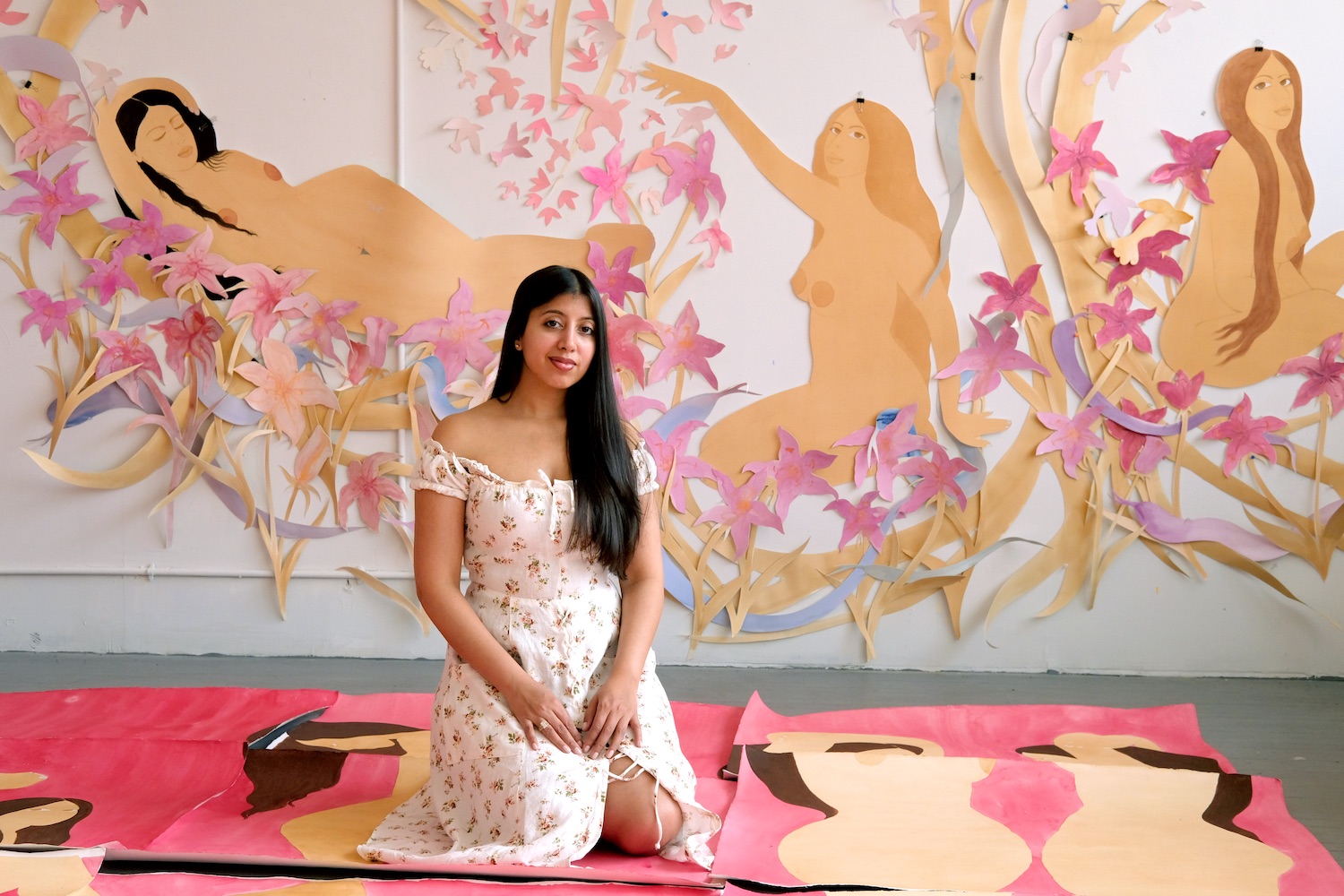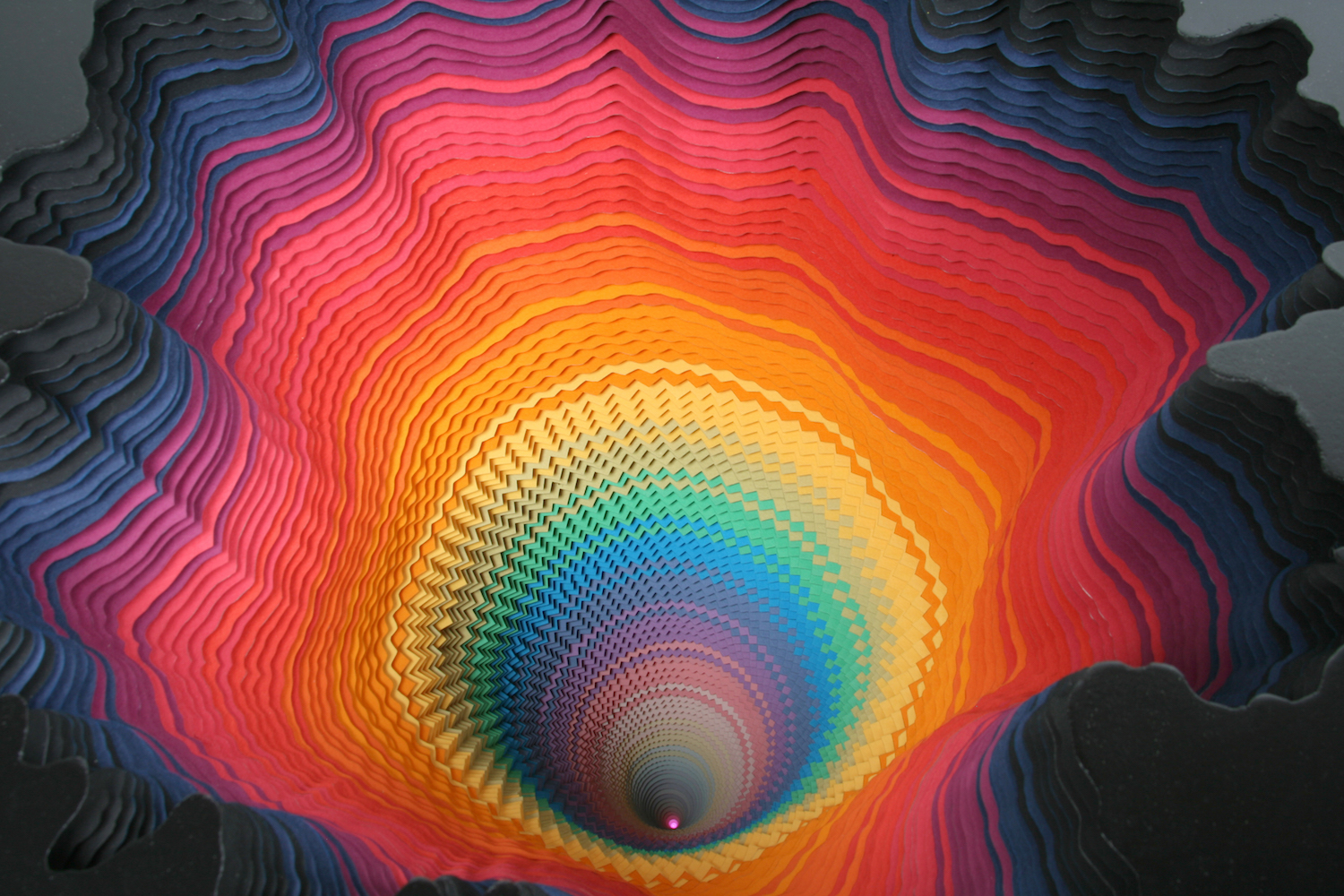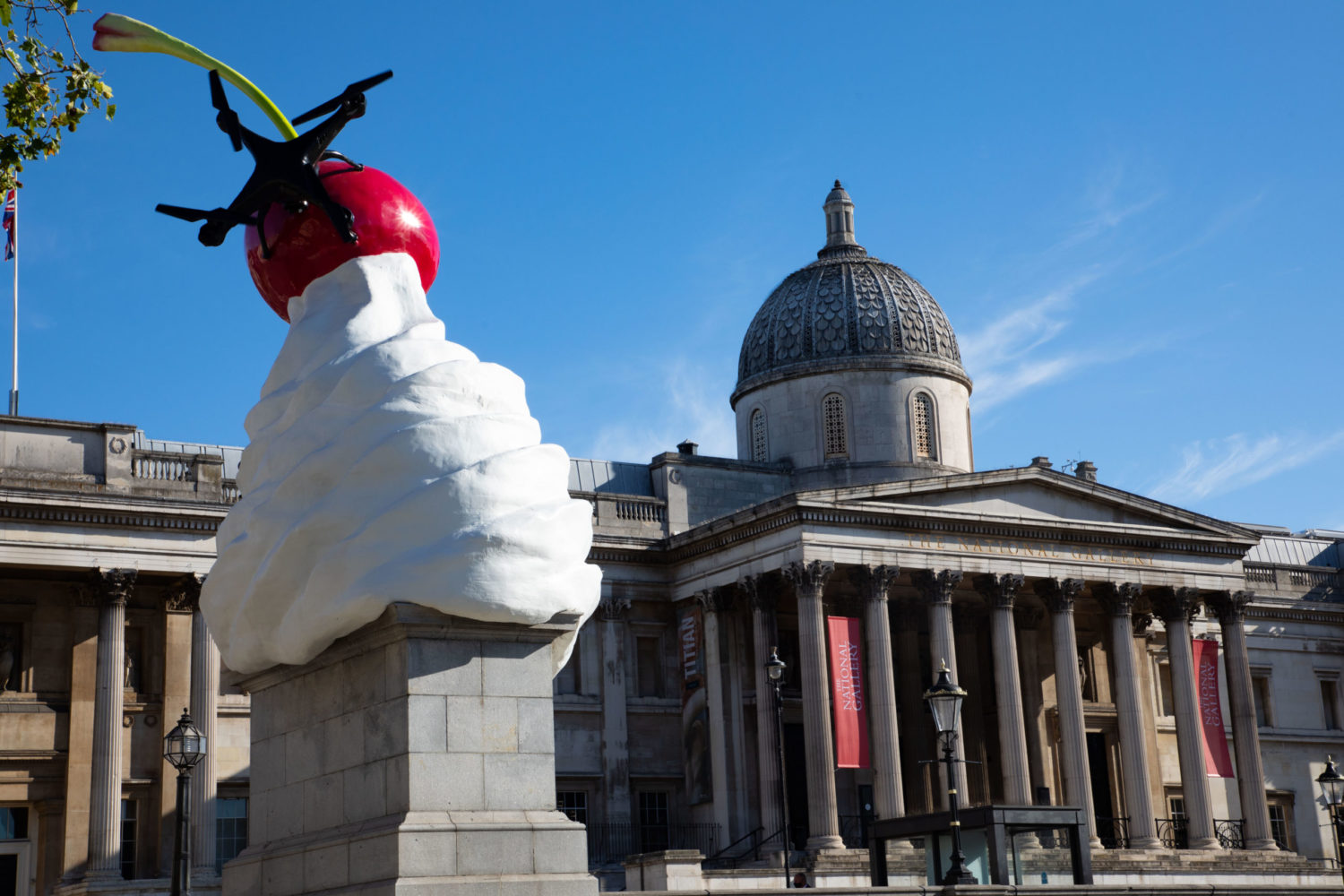The multidisciplinary work of Tomokazu Matsuyama can be seen around the globe. Based in Brooklyn, the Japanese artist—known as “Matzu”—creates paintings, murals, and sculptures to be included in private and public spaces alike. We’ve seen his Sky Is The Limit mirrored sculpture stationed at Harbour City in Hong Kong; paintings in the solo exhibition “No Place Like Home” presented at Zidoun-Bossuyt Gallery in Luxembourg; a recent mural at the renown Houston Bowery Mural wall in Manhattan; and other creations included in permanent collections at LACMA, the Asian Art Museum in San Francisco, and the Royal Family of Dubai.
Regardless of location, Matzu’s signature sculptures catch the eye. Gleaming with a silver mirrored exterior, each tells a blended story of cultural heritage and global identity. Recently, a new work and translated story debuts in his home country at the busiest railway stop in the world. Now anchoring the East exit of the JR Shinjuku Station in Tokyo is Shinjuku East Square—a permanent public art project in collaboration with East Japan Railway Company that took two years to complete.
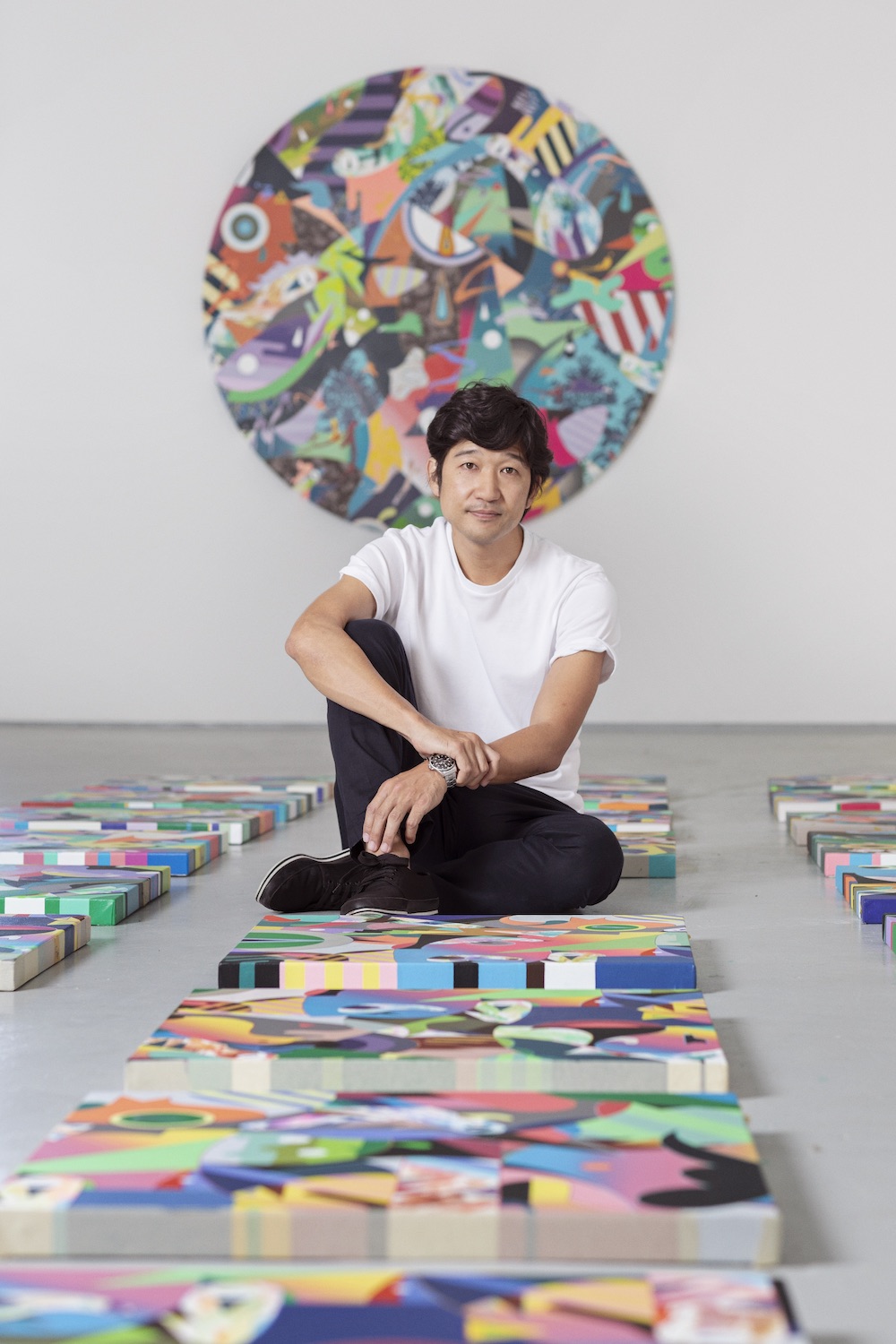
Photo by Naoko Maeda, courtesy of Tomokazu Matsuyama.
The monumental land art sculpture stands over 26 feet tall, centered around a boy named Hanao-San holding a bouquet to greet visitors from all over the world. Presented as a welcoming gesture for connection and communication, the graphic-inspired piece connects urban and ancient Japanese history with the aesthetics of nature. The concept was dubbed “Metro-Bewilder” by Matzu—a coined word that encompasses the city (metro), nature (wild), and bemusement (bewilder)—to show conflicting elements in harmony. Surrounding Shinjuku East Square is a community park, and many of Tokyo’s tallest buildings—from the twin towers of the Metropolitan Government office to department stores, subterranean malls, and more.
Whitewall spoke with Matzu to learn more about his latest work, what a day in his studio is like, and why he’s thinking about unity and identity more than ever before.
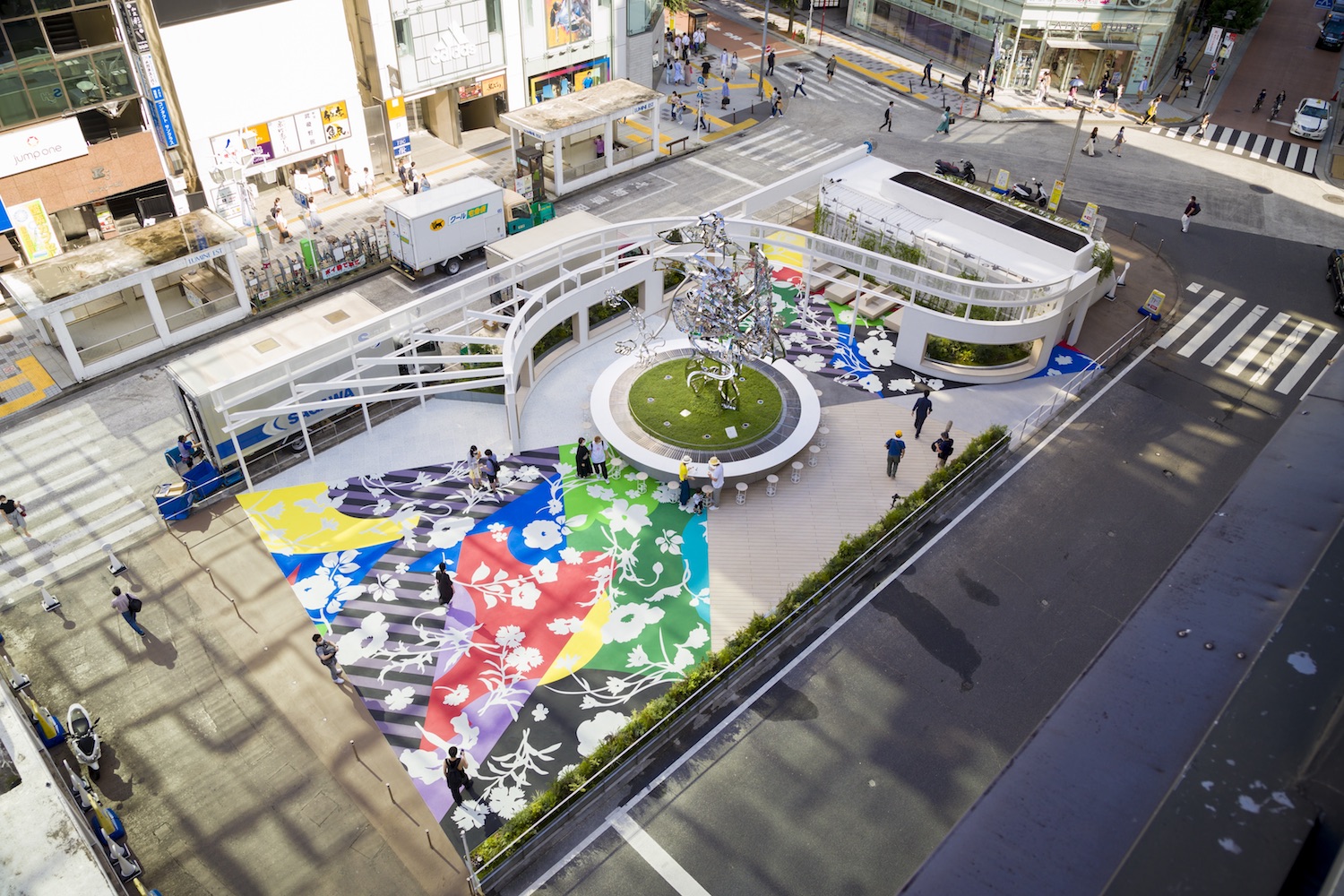
Shinjuku East Square, courtesy of Tomokazu Matsuyama.
WHITEWALL: Where did the idea of Shinjuku East Square come from?
TOMOKAZU MATSUYAMA: The idea of this public art project came from thinking about over 3,500,000 daily users. Including both international and domestic, I wanted this art to be a correlative work that blends different cultural values between the East and West, tradition and modern cultures, nature and city, and explore, appreciate, and praise its relationship and its encounter. By locating nature in a grey urban space, where green is merely perceived, my attempt was to draw out the many dichotomies and to manifest an authentic nature amid a desolate cityscape.
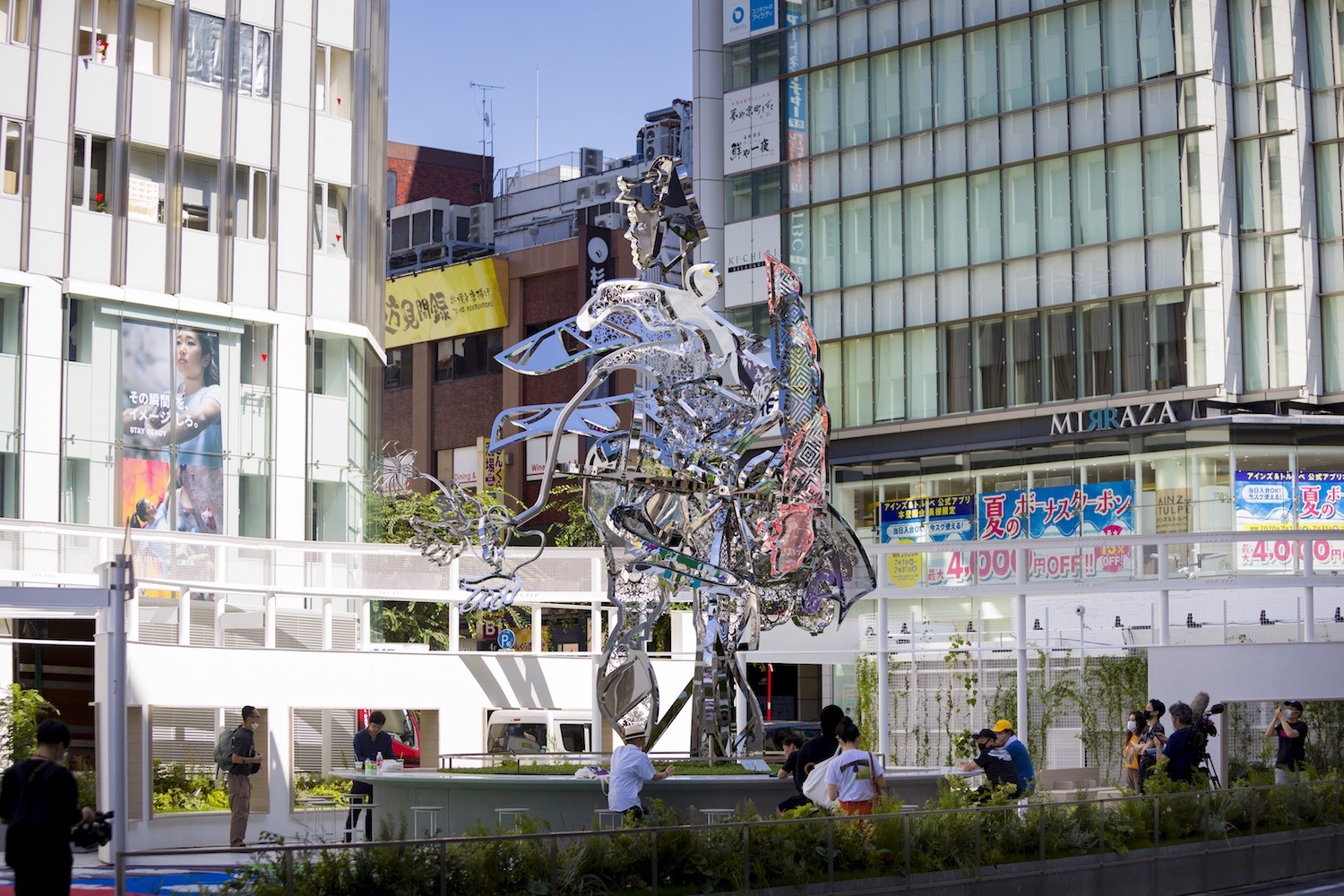
Shinjuku East Square, courtesy of Tomokazu Matsuyama.
WW: How did you work with in collaboration with the East Japan Railway Company?
TM: In 2018, I presented my idea of this project to the CEO in person in Tokyo, demonstrating the economic impact that this public art can bring out. Once my proposal was accepted, I was selected to realize this project despite the time difference and distance. We built a global team, and we communicated on a daily basis via emails, texts, and conference calls for 2 years to bring it all together.
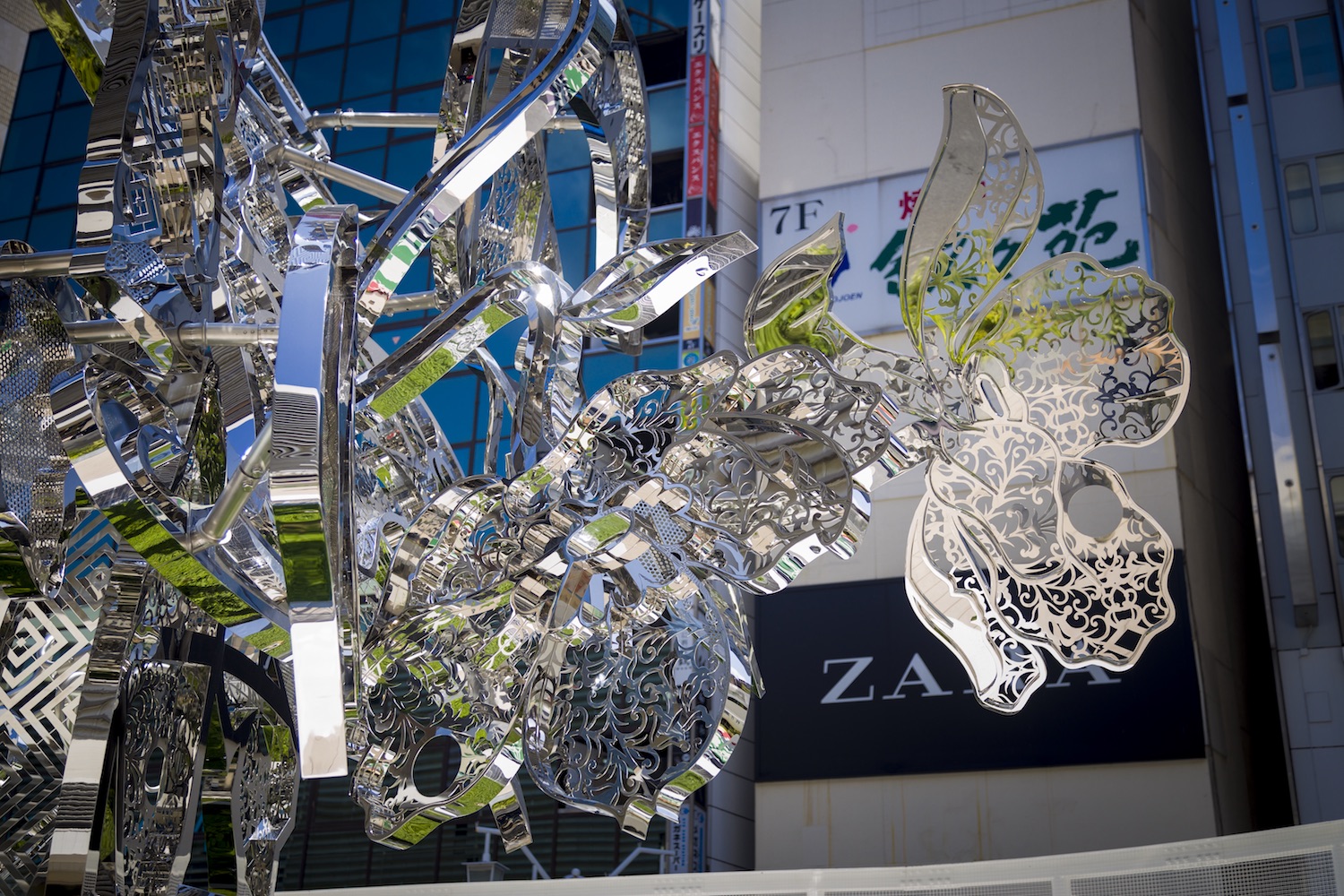
Shinjuku East Square, courtesy of Tomokazu Matsuyama.
WW: How did you communicate your concept of “metro-bewilder” with this piece?
TM: “Nature” and “metro” will ultimately not have a relationship, as it can only live independently. The idea was to create a utopian concept with using the language of art, so the bewildering through art will connect this opposing factor and astonish yet comfort the visitors.
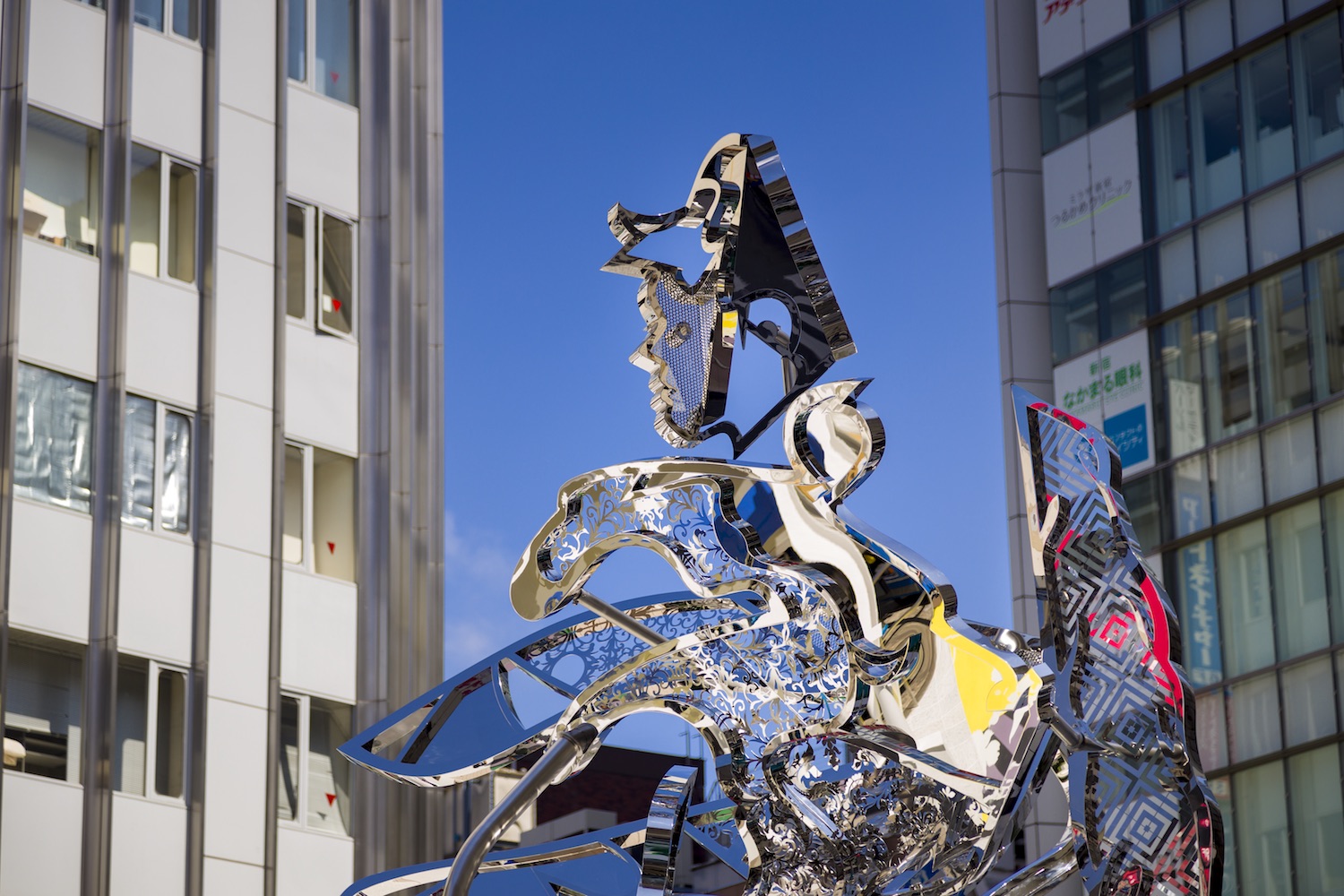
Shinjuku East Square, courtesy of Tomokazu Matsuyama.
WW: Shinjuku is fast, dynamic, and full of culture. Why is it particularly important to you?
TM: It’s one of the few places that have not culturally been gentrified in Tokyo for historical and geographical reasons. The core culture still remains valid—not necessarily all positive. It well represents Tokyo, where I’m originally from. I feel a sense of belonging.
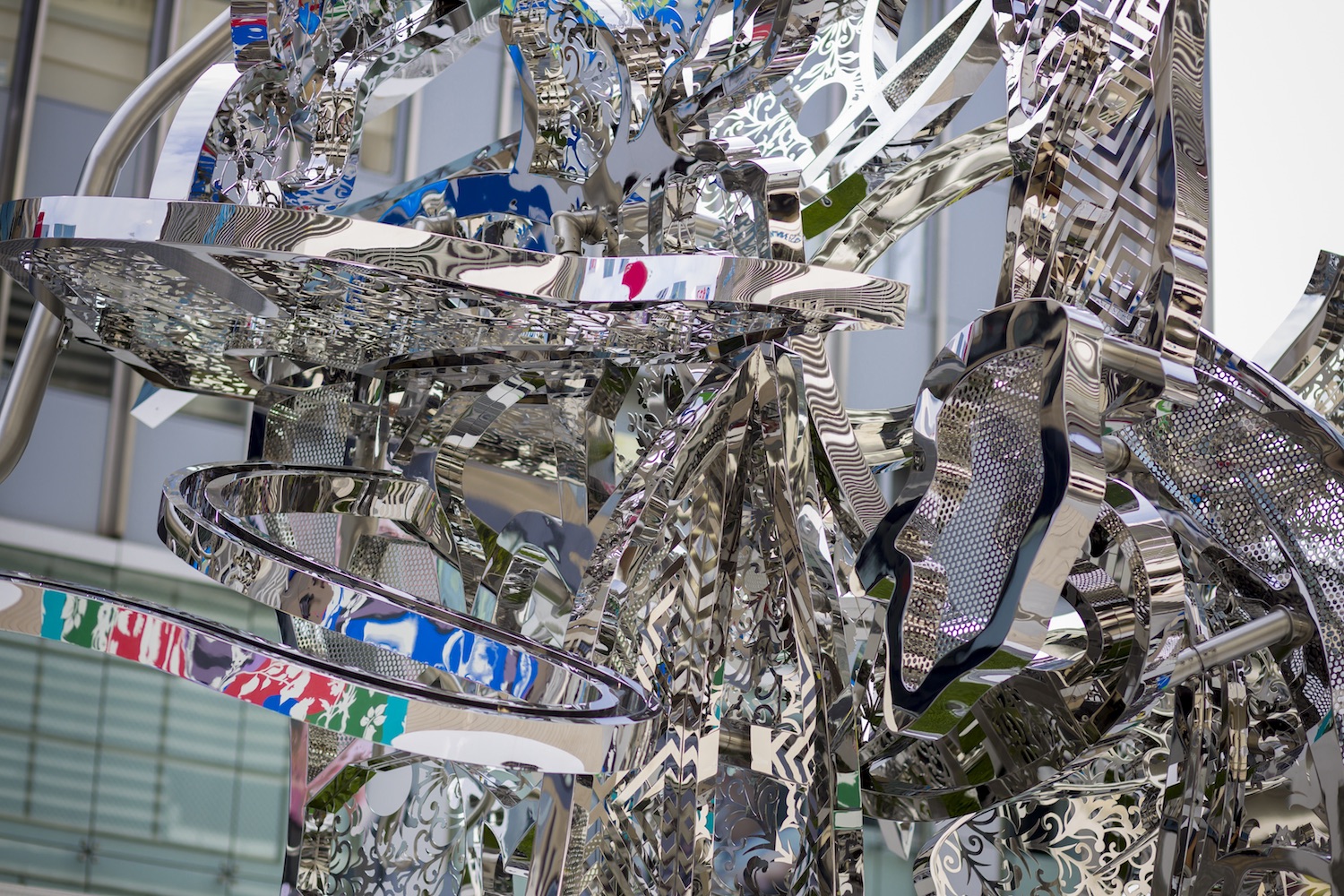
Shinjuku East Square, courtesy of Tomokazu Matsuyama.
WW: How do your cultural heritage and your global identity impact your creativity as an artist?
TM: In every way. I feel this sense of being a global citizen had allowed me to keep my eyes open. Japan is full of tradition, for good or bad; there is an overwhelming amount of legacy, opposed to my current home, NYC. The history of the U.S. is only less than three centuries, yet it’s the hub of every culture. So much to learn.
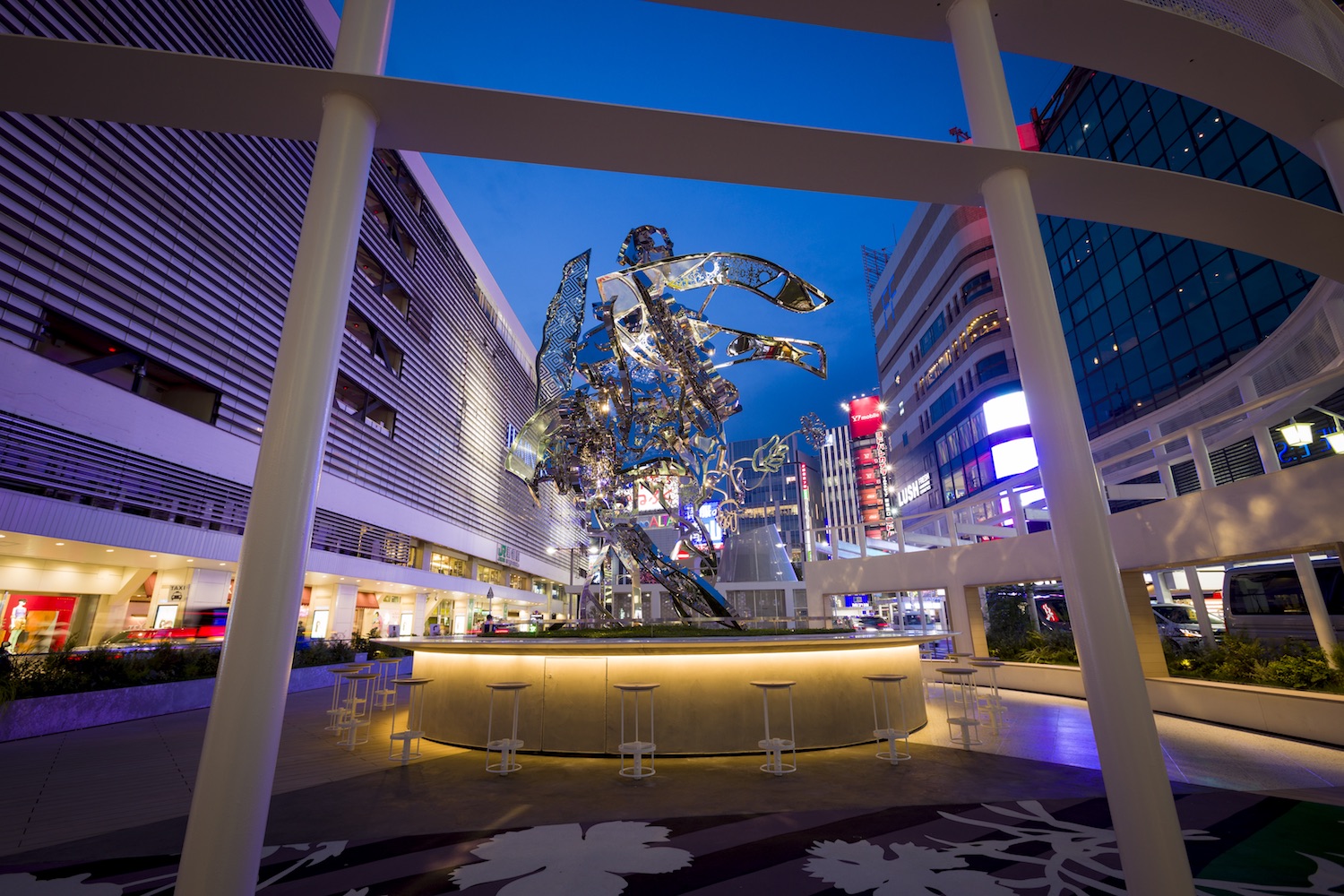
Shinjuku East Square, courtesy of Tomokazu Matsuyama.
WW: Your work explored cultural signifiers and the impact of globalization. How so?
TM: What else is there to actually explore in this day and age? What defines us? How are we unique and different? Black Lives Matter and other social happenings make us to think about unity and identity more than ever before. Attribution has become vague but extremely significant.
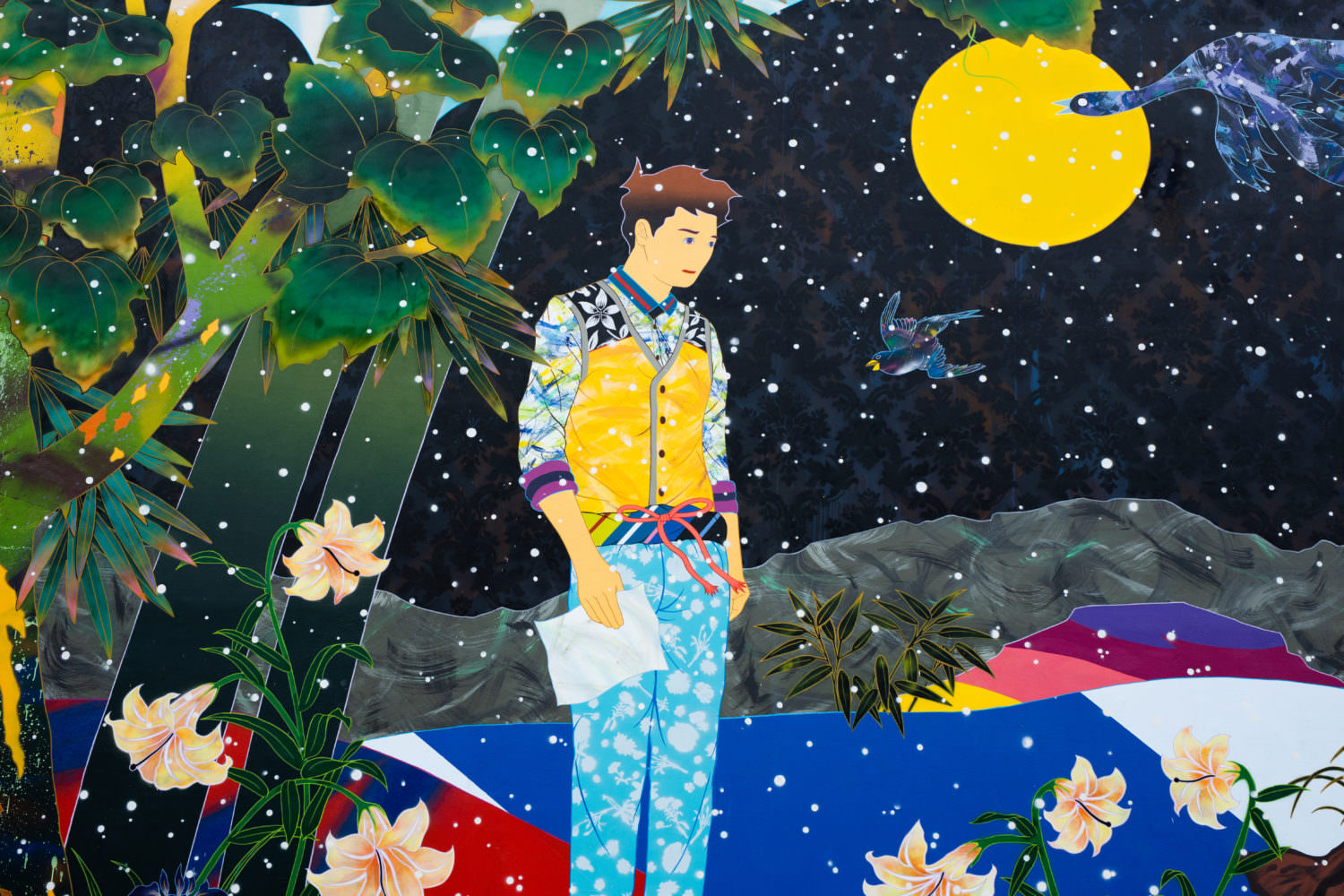
Photo by Chop Em Down.
WW: Is being multidisciplinary central to your work as an artist? Is there a medium you gravitate toward?
TM: My primary focus is that I am a painter; working in the studio every day to create paintings yet engaging myself to create other works—from large murals to massive outdoor sculptures—will allow me to communicate with a larger audience, such as the public at large. While having museum shows delivers another function of creating a dialogue with history, having the duality of being in the U.S. and coming from a traditional background has given me the gravitation toward my artistic interest.
WW: What’s a day in your Brooklyn studio like?
TM: Typical workaholic situation. I’ve been pulling off 15 to 16 hours of working, while my studio has about ten staff members—from painting assistants to a team that manages numerous amounts of projects that it takes to make it happen in the next two years. I’m ready to be inspired in the early morning, communicate with the team to be updated with project progresses, create in the afternoon, and take international conference calls and emails in the evening. I try my best not to have all meals at the studio, but it’s happening half of the week.
WW: How did time amid COVID-19 isolation impact your work?
TM: It’s actually given me numerous opportunities. I’ve been very creative. 2020 has been the busiest year for me. I’ve actually traveled internationally under this time, not easy by all means, but it’s made me think differently, as breakthroughs to the hurdles can only be achieved with creativity. There is quite a number of projects lined up right now. I’m trying to stay focused every day so the outcome will be greater than expected.





